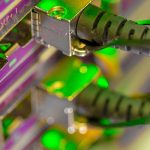At the start of 2025, quantum computing stocks surged, despite skepticism from investors and tech leaders like Jensen Huang and Mark Zuckerberg, who assert that the field may not yield profits. Still, the excitement around quantum computing remains high.
In cyber security, quantum computing is a mixed bag. It brings remarkable capabilities but also significant risks. For every white-hat hacker using quantum tech to strengthen defenses, there are malicious hackers looking to exploit it. We have to tackle this quantum dilemma and recognize both the benefits and the dangers.
Quantum systems leverage qubits to handle multiple calculations at once, greatly enhancing computational power for specific tasks. For cyber security, this means that quantum computers could potentially break encryption methods that protect our online communications and financial transactions. Techniques like RSA and ECC, which rely on the difficulty of factoring large numbers, could become obsolete.
Think about this: A traditional computer might take trillions of years to crack a 2,048-bit RSA key, while a quantum computer could do the same in hours or days. The efficiency of elliptic curve cryptography (ECC) is also under threat from quantum methods. This raises alarms about hackers using quantum tools to decrypt sensitive information, jeopardizing everything from personal data to national security.
Even encrypted data collected today isn’t safe. Adversaries might adopt a “harvest now, decrypt later” strategy, gathering encrypted data today for future attacks when quantum decryption becomes more feasible. Industries such as banking and healthcare, which depend on secure communication, could face severe challenges.
On the plus side, quantum computing presents tools for stronger defenses. Quantum Key Distribution (QKD) leverages quantum mechanics to create secure communication channels. If someone tries to eavesdrop, the very act alters the state of the transmitted keys, revealing their presence.
Then there’s quantum random number generation (QRNG). Unlike traditional methods, QRNG taps into the unpredictability of quantum mechanics, creating truly random sequences. This elevates cryptographic security and makes systems less vulnerable to attacks.
Next, quantum-enhanced machine learning could revolutionize threat detection. With its ability to analyze vast datasets quickly, quantum ML can spot subtle signs of potential attacks sooner than classical systems.
The cyber security field isn’t sitting back, either. Post-quantum cryptography (PQC) is on the rise, with efforts underway to develop algorithms that can resist attacks from both classical and quantum computers. Standards organizations like NIST are working on this, but adopting PQC won’t be straightforward. Organizations will need to assess their current cryptographic measures and implement new algorithms—this could take years, especially in sensitive areas like finance and healthcare.
Transitioning to PQC gets trickier for those relying on legacy systems, which often weren’t designed with quantum threats in mind. Testing these new algorithms for compatibility with existing infrastructure adds another layer of complexity. Organizations must invest time and resources into training, infrastructure upgrades, and compliance with evolving regulations.
While we focus on using quantum technology for defense, we also need to consider that cyber criminals will take interest in these advancements too. Nation-states and organized crime could finance the development of quantum tools for malicious purposes. This could lead to sophisticated attacks like quantum-enhanced phishing or the cracking of biometric data.
Everyday security measures, like QR codes and multi-factor authentication, might become easily compromised due to attackers harnessing quantum computing power. The technology that supports transactions and user authentication may need significant modifications to stay secure.
Regulatory bodies are starting to respond to the quantum challenge. Governments are investing in quantum research and frameworks for quantum-safe technologies. Companies need to engage with these initiatives to ensure compliance and strengthen their defenses. Yes, cyber security could become more expensive, but incidents will likely multiply, too—over 2,200 daily incidents were reported in 2024.
Collaboration between public and private sectors is vital for preparing for a quantum future. Sharing threat intelligence and best practices will help bolster collective security. Moreover, governments need to build a solid quantum infrastructure to prevent adversaries from monopolizing technological advancements.
As quantum computing shifts from a theoretical concept to a tangible reality, organizations must take proactive measures. Here’s what they can focus on:
-
Education: IT and cyber security teams should get educated about quantum concepts. Building in-house expertise is essential for navigating the complexities of quantum integration.
-
Cryptographic inventory: Mapping current cryptographic use helps identify vulnerable assets, allowing prioritized upgrades.
-
Adopting PQC: Transitioning to NIST-approved post-quantum algorithms is crucial for staying competitive and compliant.
- Testing quantum services: Organizations should pilot technologies like QKD and QRNG to evaluate their real-world benefits, ensuring smooth integration and efficiency.
Quantum computing is not just around the corner; it’s already here. Embracing the quantum era now is vital to protect assets and remain competitive in an evolving tech landscape.









